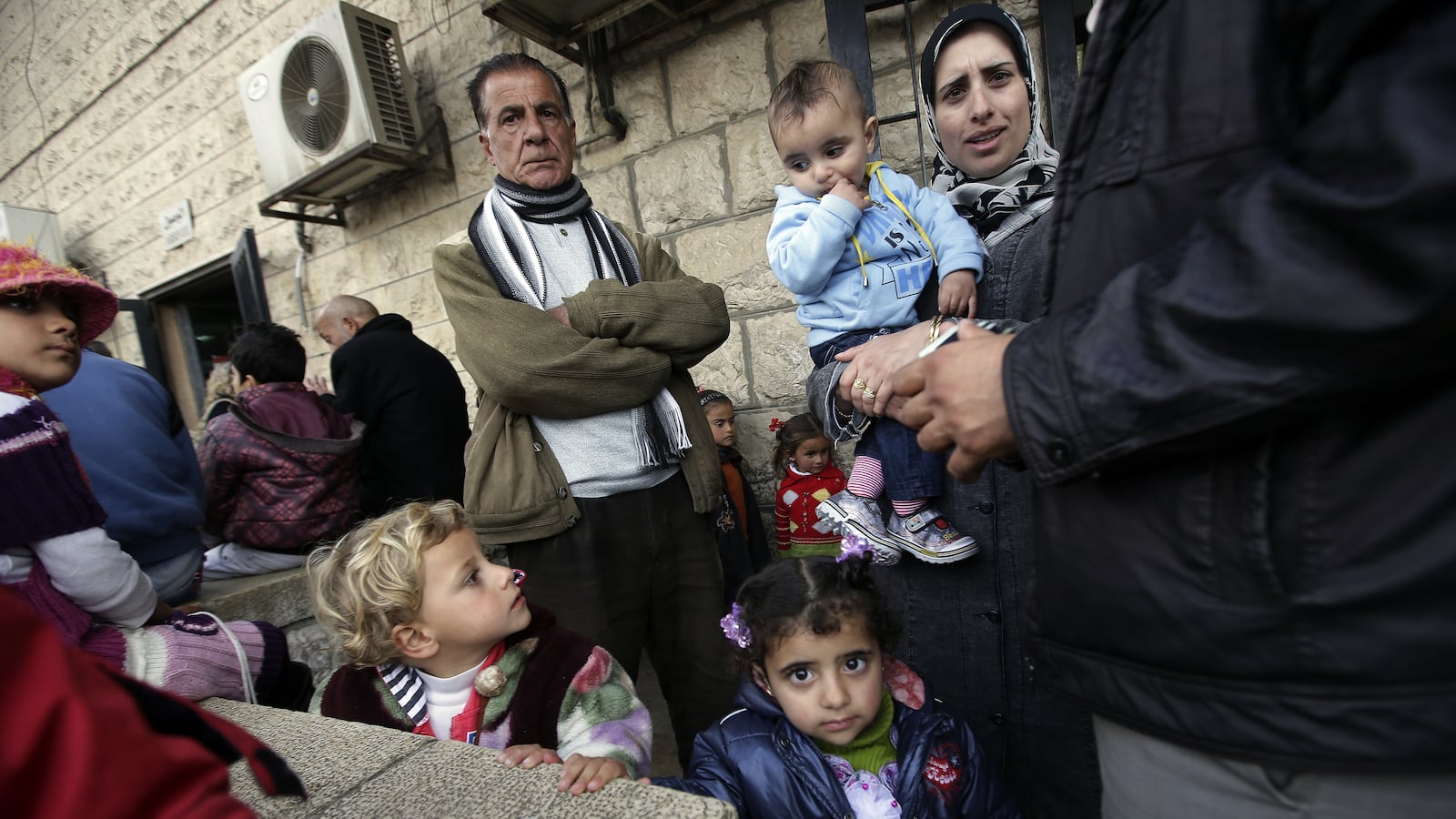The ongoing violence in Syria has forced tens of thousands of Palestinian refugees to flee to neighboring countries. The majority has gone to Lebanon, where 45,000 Palestinians from Syria continue to live through the traumas of war and displacement. Most wish to return to Syria when violence subsides, according to humanitarian aid workers and U.N. officials in the region.
But when they get to Lebanon, their struggles—if not for their lives, then at least their livelihoods—are not over. Palestinians are forced to compete for low-skilled jobs, affordable housing and access to social services with Lebanese and other refugees living in Lebanon. Syrian refugees are also competing for work, especially in the service and construction sectors.

“As can be expected from such overcrowded conditions, tension has been rising since competition for work and affordable housing has become fierce in many of the areas where Palestinians live in Lebanon,” said Laura Macdissi, public information officer for the United Nations Relief and Works Agency (UNRWA) field office in Lebanon.
Still, she said the host population, including Palestinians and Lebanese in Lebanon, has shown hospitality to refugees from Syria.
Even before this refugee crisis, Palestinians in Lebanon were not legally allowed to work in most professions. They continue to live in cramped spaces in 12 refugee camps or rented apartments. Half of the Palestinians from Syria are concentrated in two areas, Tyre and Saida, which includes the largest Palestinian refugee camp in Lebanon, Ein el Hilweh, established in 1948. They’re living with 13 individuals per residence, on average.
“The most common point of friction is on jobs,” said Maxence Delchambre, Save the Children International's area manager, based in Beirut. Palestinians from Syria are competing with both Palestinian Lebanese and Syrian refugees for work, mostly in business and construction. “This is resulting in a sense that [Palestinians] feel discriminated against,” Delchambre added.
While he said there was a strong, visible sense of solidarity between Palestinians from Syria and those from Lebanon—especially with help navigating the humanitarian bureaucracy and accessing UNRWA services—he also said competition for scarce resources had resulted in verbal confrontations with the potential to become violent.
In Jordan, there is similar tension between refugees from Syria and marginalized Jordanians and Palestinians, who were displaced in 1948 or descend from that refugee population.
Some landlords prefer to rent to refugees who can pay upfront because their housing is subsidized by the U.N. or NGOs when they arrive in Jordan, said Muthanna Khriesat, the Jordan country director for Questscope, a British NGO operating in Jordan since 1991. But refugees are left unable to afford lodgings in the long-term when subsidies for shelter run out.
High demand has caused rental prices to rise, upsetting Jordanians and Palestinians, who are also now forced to compete with refugees for jobs. Jordanian employers have started “replacing Jordanians and Palestinians with Syrians cause they accept low wages,” and don’t have to be paid social security and other benefits, Khriesat said. But according to Amnesty International, the Jordanian government has sent hundreds of refugees, including Palestinians, back to Syria this year for working illegally in Jordan, the Christian Science Monitor reported.
Last month, UNRWA said seven Palestinian refugees were killed and 15 others injured during fighting in Daraa camp in Syria. Fighting Syrian government and opposition forces control half of the Palestinian refugee camps in Syria, and most of the civilians have fled. Last December, heavy fighting sent residents of Yarmouk, once the largest Palestinian enclave in Syria, fleeing by the tens of thousands.
"By far the main reason to leave is violence," Delchambre said. Dwindling assets and financial problems are secondary reasons for refugees to flee Syria. Some periodically cross the border back into Syria to check in on businesses and collect incomes.
Prior to the Syrian conflict, Lebanon was hosting 400,000 Palestinian refugees. The UN Refugee Agency estimates there will be 300,000 total refugees from Syria in Lebanon by December.
Many expect to return to Syria soon and rebuild their lives. They don’t see a future in Lebanon. Still, Delchambre said he wouldn’t say Palestinians from Syria have hope.
“Think about a population that is waiting for a state for three generations,” he said. “The word ‘hope’ is a distortion to some extent.”
In Syria, Palestinians maintained a modest, but comfortable life, with good access to education and healthcare. For those who have found refuge in Lebanon, they feel that their lives have been downgraded.
“They don't have the time to think and then create coping mechanisms to live under the new conditions of living,” Delchambre said. “It's like having their whole life on hold while they are living in Lebanon.”
By the end of this year, UNRWA expects the number of Palestinian refugees from Syria in Lebanon to almost double. Social tension over jobs and housing will likely continue to rise.




